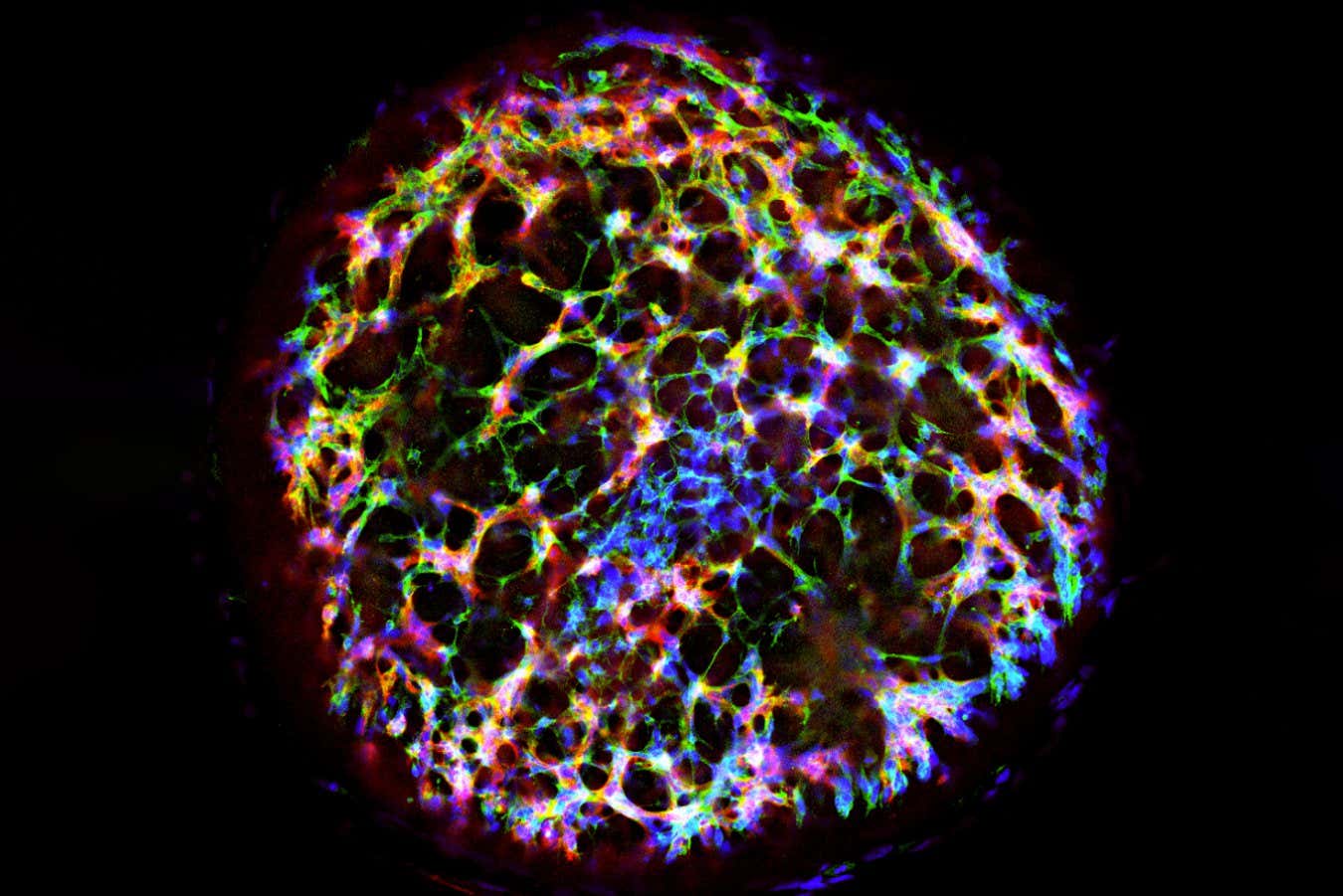Blood vessels grown in the lab in just five days could quickly prevent the tissue damage that can occur after an accident
By Carissa Wong
13 June 2025
A human vascular organoid generated from stem cells
Melero-Martin Lab, Boston Children’s Hospital
Tiny balls of lab-grown blood vessels helped restore blood flow to injured tissue in mice, minimising necrosis. This approach could one day be used to reduce some of the damage caused by accidents or blood clots.
Researchers have previously made clumps of lab-grown blood vessels, known as organoids, by immersing human stem cells in a cocktail of chemicals. But this approach takes a few weeks and often produces vessels that poorly mimic those in the body, says Juan Melero-Martin at Harvard University.
Read more
A new understanding of how your blood type influences your health
Advertisement
In an alternative approach, Melero-Martin and his colleagues genetically engineered human stem cells that were made by reprogramming skin cells. They gave the stem cells a genetic sequence that causes them to develop into blood vessels in the presence of the antibiotic doxycycline. “We managed to get blood vessel organoids in just five days,” says Melero-Martin. The vessels also had protein and gene activity levels that were highly similar to those found in the human body, he says.
To test whether their organoids could treat injured tissue, the researchers surgically cut off the blood supply to one leg of several mice, so it was less than 10 per cent of normal levels. One hour later, they implanted 1000 organoids at each of the injury sites.
When imaging the mice two weeks later, the team found that the implanted blood vessels had fused with those already in the animals, restoring blood supply to 50 per cent of normal levels – a substantial amount, says Oscar Abilez at Stanford University in California. “For example, in a heart attack situation, if you can restore that much blood flow to tissue, in a reasonable time, that would be significant for reducing tissue damage.”
